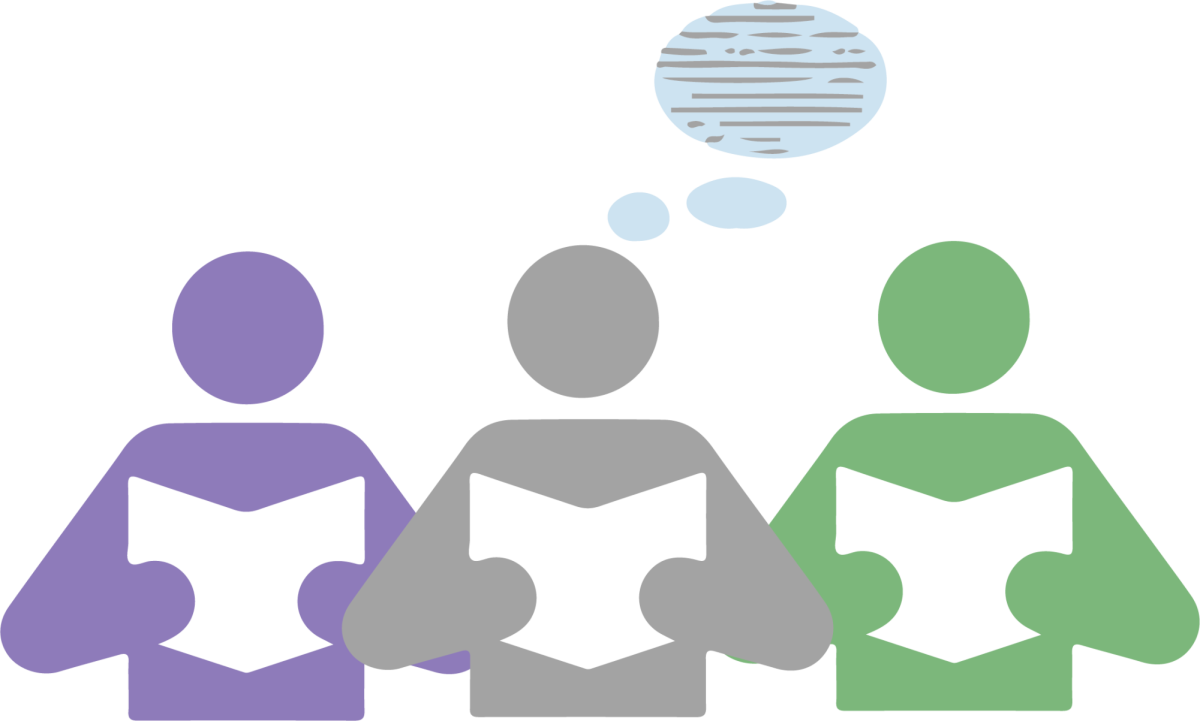The human brain is constantly working to absorb new information. From the minute it wakes up, new images and thoughts work to be processed. However, different factors can affect the brain’s ability to process this information. For example, trying to drive to work while eating a snack on the way will affect one’s ability to focus and take in information. Reading through print compared to reading online can also affect our brain and comprehension differently.
Although nowadays most everyday tasks revolve around using the internet, physical text is still more compatible with the human brain than the internet. This theory was proven to be true when studies were conducted on reading comprehension through print instead of online. This backs up the idea that humans are more likely to understand information on a physical copy rather than on a screen.
A main reason humans are more likely to absorb more information through print instead of online is because of personal mindset. Think about scrolling through social media and how fast the human brain can read comments, captions and messages. The brain can do this because of skimming, which is now known to be heavily associated with social media.
This is why when articles are read online, it is easy to skim text rather than absorb the information. However, when physical print is read, the likelihood to slow down and understand the information given increases. Reading online presents the risk of being distracted by ads, pop-ups, messages and other notifications.
Reading text online or spending any amount of time looking at a screen is straining for the eyes. Reading a physical book is more beneficial for not only the eyes but also the brain, especially when trying to wind down for the night.
This is because screens radiate blue light which wakes the brain up to boost alertness. Blue light can affect the body’s melatonin production, disrupting sleep duration and efficiency, while reading print before bed is proven to increase the body’s melatonin production. This is why it is important to regulate one’s amount of screen time consumption throughout the day.
However, reading online affects not only the visual and mental state of the body but also physical. Prolonged screen time is shown to decrease physical activity, which could potentially lead to reduced muscle strength and handwriting. As more screen time is incorporated into everyday tasks, the risk of altering muscle memory increases.
For example, learning to write in cursive is becoming less common and is no longer required in many schools. Cursive is important to learn because it is proven to stimulate brain synapses and synchronicity between the left and right side of the brain. This is something that regular writing or typing cannot achieve. This is why it is vital to continue to read and write print even as society encourages us to use more technology.
Many schools rely heavily on screens for learning. While this can make learning more efficient, studies have shown reading print is six times more likely to boost reading comprehension skills. This leads to the idea that incorporating a significant amount of screens into the education system could be doing more harm than good.
By increasing children’s screen time, the risk for health issues such as obesity, diabetes and sleep problems also increases. Screens can be highly addictive, especially in children, and discourage social interaction and physical activity. Even in teens, there is a higher risk of developing depression and loneliness with prolonged screen-use.
Even though several risks are associated with prolonged screen time and absorbing information online, that’s not to say it’s all harmful. Reading online allows for all your information to be in one place which can be easily accessed. Additionally, there are multiple ways to effectively take notes online which can increase your reading comprehension. However, at the end of the day, nothing beats going old fashioned and physically flipping through the pages of your favorite novel.

